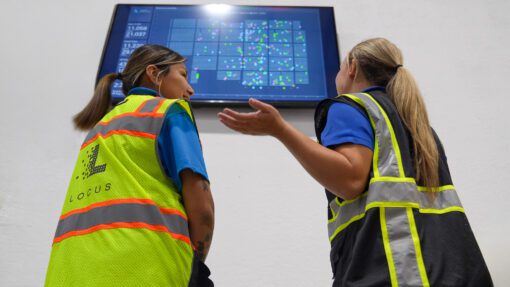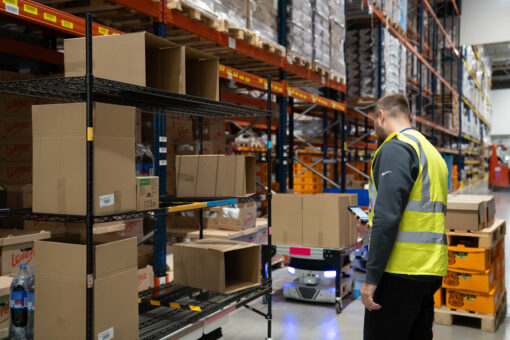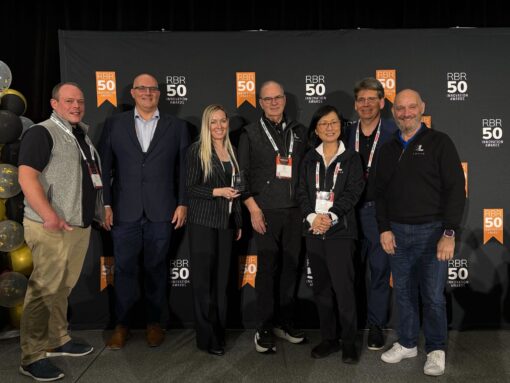WP: How to achieve 400 UPH with Locus Fast Pick
WP: How to achieve 400 UPH with Locus Fast Pick Download Now!
The Seven Measurable Levers of Warehouse Flexibility
Rick Faulk, Chief Executive Officer

When I wrote “Why Flexible Automation Is Winning and What Comes Next” earlier this year, I emphasized that agility would separate the leaders from the laggards in warehouse fulfillment. That vision is now tangible, and flexibility can be quantified through seven measurable levers that reveal how effectively a warehouse can adapt, scale, and evolve.
1. Deployment Flexibility
In modern fulfillment, timing is everything, and no one can afford to wait months, or years, just to get automation working. Deployment flexibility in a warehouse means you can:
- Ramp up in weeks, not quarters.
- Scale your footprint to start small and grow as you learn.
- Reconfigure facilities to change layouts, add mezzanines, and re-slot without a full engineering rebuild.
Why it matters: Markets don’t wait, so if your warehouse automation takes too long to deploy or is brittle when things change, you’re locked in and you lose the flexibility to respond to the next wave of demand or disruption.
Take action: As you evaluate automation solutions, ask for their “time-to-live” (how quickly live automation can happen) as well as their “time-to-reconfigure” (how much effort it takes to adjust to a new layout or workflow).
2. Workflow Flexibility
Instead of focusing on just one static workflow, warehouses focus on a number of workflows, including dynamic picking, putaway, replenishment, returns, transport, sortation, and case movement in a hybrid environment of humans, robots, and other automation. Workflow flexibility in a warehouse means you can:
- Support multiple use-cases and unique and complex workflows (not just picking, but putaway, replenishment, returns, transport, sortation, and case movement).
- Dynamically route work in real time based on congestion, priorities, or operator availability.
- Balance zones in real time as AI adjusts to shifting peak orders.
- Enable hybrid operations where humans, bots, and other automation (sorters, AS/RS, conveyors) co-exist seamlessly.
Why it matters: If your automation is purpose-built for one workflow only, you end up with islands. In contrast, a flexible workflow platform gives you a base capability you can adapt to future business requirements.
Take action: Evaluate a solution by how many workflows it supports out of the box today and how easily it can add new ones without major engineering changes.
3. Commercial & Business Flexibility
Warehouse automation should align with your business model, not define it. Commercial flexibility in a warehouse means you can:
- Adopt Robots-as-a-Service (RaaS) OpEx-based pricing models to scale cost with throughput.
- Enable elastic scaling to flex fleets up and down for peaks or seasonal shifts.
- Leverage multi-site fleet sharing to reallocate robots across sites as demand shifts.
Why it matters: Fulfillment volumes don’t behave like fixed manufacturing lines. They surge, ebb, and shift, and if the cost model is rigid, you pay for slack, or you fail in peaks.
Take action: When modeling ROI, insist on scenarios for peak/valley demand and ask: “Can I scale up? Can I deploy across the network or other floors with other workflows?”
4. Integration & System Flexibility
No warehouse stands alone, and legacy WMS, home-grown systems, conveyors, AS/RS, and sorters are all part of the fabric. Integration flexibility in a warehouse means you can:
- Integrate with more than 40+ WMS platforms (and counting).
- Leverage other automation modalities, including packing solutions, conveyors, AS/RS, and emerging technologies.
- Future-proof operations with a single orchestration layer (for example, LocusONE™) that manages multiple robot form factors under one platform.
Why it matters: If your warehouse automation is a silo, it becomes a legacy liability. Integration flexibility protects you from being locked into yesterday’s architecture.
Take action: Map out your current and planned automation ecosystem and ask: “Will this new system integrate? How much rework? What’s the upgrade path?”
5. Labor & Workforce Flexibility
Labor is one of the largest cost and risk variables in the fulfillment equation. Labor flexibility in a warehouse means you can:
- Train new operators in under an hour for rapid onboarding.
- Support a global and diverse workforce with a multi-language user interface.
- Allocate labor dynamically as the system fluidly directs workers across tasks.
- Enable accessibility for part-time, temporary, and high-turnover labor with minimal retraining.
Why it matters: The labor market is volatile. If your automation presumes a fixed operator pool with fixed skills, you risk performance drops when labor turns or when flow changes.
Take action: Ask how much training time is anticipated per associate, and also ask: “How easily can an associate switch between workflows or tasks mid-shift?”
6. Network & Enterprise Flexibility
In an enterprise setup of multiple sites and multiple fulfillment models, warehouse flexibility must operate at a network level. Network flexibility in a warehouse means you can:
- Gain multi-site visibility with consistent dashboards for performance, analytics, and fleet management across locations.
- Optimize cross-facility performance as AI learns from all sites to drive global improvements.
- Redeploy robots between facilities in days to maintain mobility and operational flexibility.
- Scale globally to standardize operations seamlessly across continents.
Why it matters: As businesses expand globally, having distinct, disconnected systems at each site becomes expensive and slow. Enterprises need orchestration at scale, not site-by-site silos.
Take action: Review your fleet scaling strategy and ask: “If I open a new site in Europe next year, how much of my warehouse automation stack can I reuse?”
7. Strategic Flexibility
Finally, strategic flexibility is about future options and not just handling today’s tasks. Strategic flexibility in a warehouse means you can:
- Support new form factors of fully automated solutions such as the industry’s most advanced AI-powered, zero-touch fulfillment system Locus Array, large-scale payload robots, pallet movers, vision modules, and more.
- Adapt to hybrid fulfillment models combining B2C, B2B, and store replenishment on a single platform.
- Extend AI capabilities as physical AI models evolve to optimize workflows and utilization continuously.
- Preserve exit flexibility, unlike rigid AS/RS systems, with AMRs that let you retain control over space, layouts, and future options.
Why it matters: Fixed warehouse automation carries strategic risk, and if your business model shifts, you want flexibility instead of a sunk cost with no way out.
Take action: Ask: “If my business changes from mass B2C to omni-channel fulfilment, can the automation evolve, or will I rip it out?”
Bringing the Seven Together
These seven levers of deployment, workflow, commercial, integration, labor, network, and strategic aren’t independent. They work together, so a weakness in one limits the value of the others. For example: you might have a flexible robot fleet (deployment flexibility) but if your integration flexibility is low, you’ll still struggle to deploy it in a new facility.
Revisiting “Why Flexible Automation Is Winning and What Comes Next” showed that the market named warehouse flexibility and scalability as the defining trend in warehouse automation. Today, fulfillment leaders must move from concept to execution and from “we need flexibility” to “we measure flexibility.”
Final Thoughts
If you only remember one thing from this blog post, remember that readiness beats rigidity. Warehouse automation that deploys swiftly, adapts seamlessly, scales easily, and evolves strategically is far more valuable than a “perfect” automation that limits your options.
At Locus Robotics, we’re committed to helping our customers turn flexibility into measured performance because warehouse automation should serve your business and not constrain it. If you’d like to explore how these seven levers can create lasting adaptability in your operations, I’d welcome the conversation.
About the Author
Rick leads the executive team with over 30 years of experience in executive management, sales, and marketing for some of the world’s most successful technology companies, such as Cisco, Intronis, j2 Global, WebEx, Intranets.com, Barracuda Networks, Lotus Development, Mzinga, and PictureTel. Rick leads the executive team and is responsible for the overall strategy and execution at Locus Robotics. Rick currently sits on various boards and is an advisor to multiple companies, including Retrocausal, Arccos, Cybernetix Ventures, and Leading Edge Ventures. Past board positions include Yodle, Virtual Computer, Bidding for Good, Skill Survey, Influitive, Ntirety, Blue Raven, and Centive.




